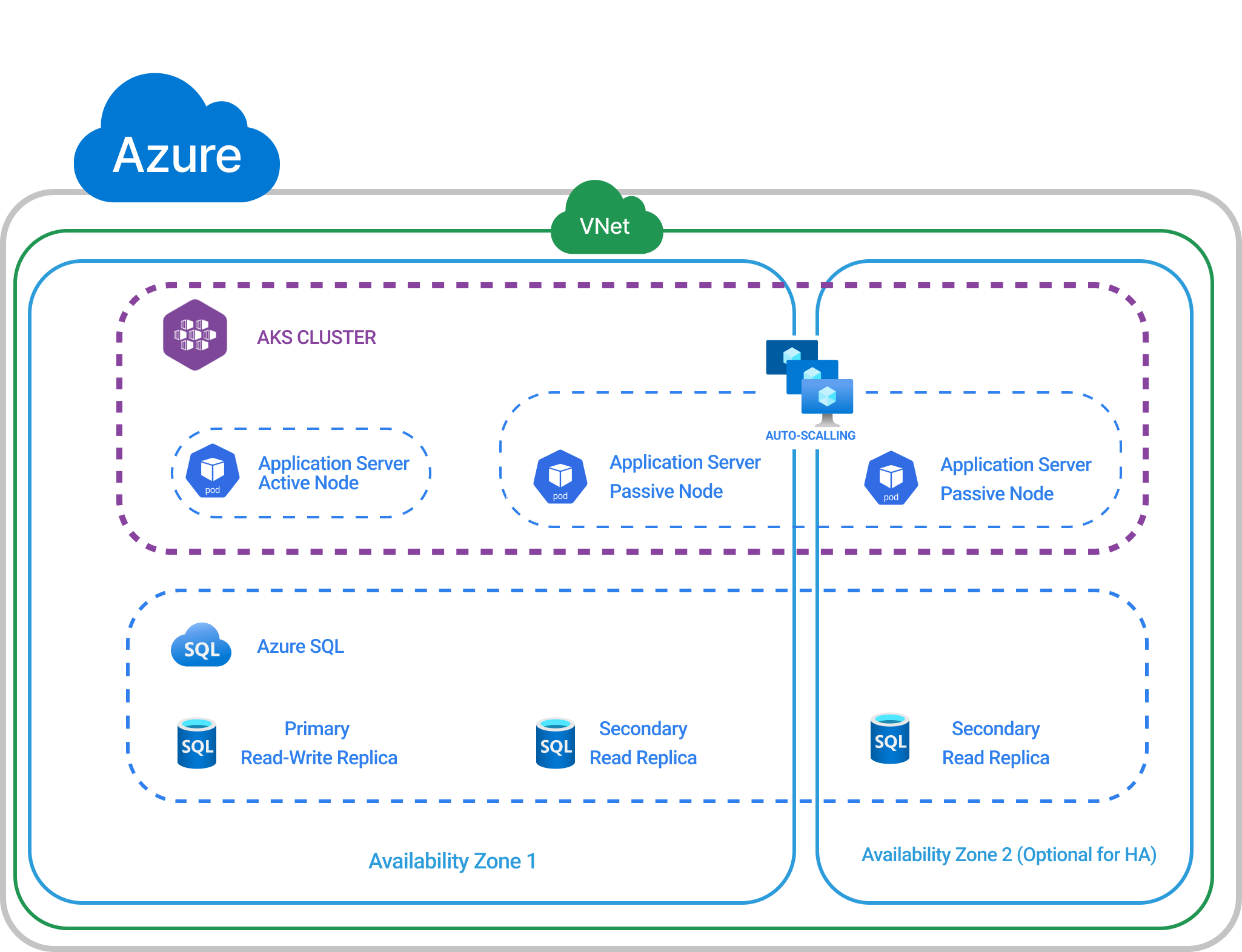| This is documentation for Semarchy xDM 5.3 or earlier, which is no longer supported. For more information, see our Global Support and Maintenance Policy. |
Install Semarchy xDM on Azure Kubernetes Service (AKS)
Introduction
You can deploy Semarchy xDM on Azure Kubernetes Service (AKS) to move your data hub to the cloud and scale your deployment as the needs of your data management initiative grow.
The following sections describe how to:
-
Plan the configuration of Semarchy xDM for production environments in Azure.
-
Deploy Semarchy xDM on Azure Kubernetes Service
-
Start and connect to Semarchy xDM installed in Azure
Production deployment
The Semarchy xDM Production Deployment describes how to set up and manage a complete infrastructure suitable for production.
Prerequisites and requirements
Review the information in this section before you begin the installation.
You will need the following to install Semarchy xDM on Azure:
-
An Azure subscription. If you do not have an Azure subscription, create a free account before you begin. This user requires administrator privileges.
-
The Azure command-line interface (Azure CLI). It is installed and configured with your Azure account. Refer to Getting started with the Azure CLI for more information.
-
An Azure ressource group and an Azure Virtual Network. Refer to Create a virtual network using the Azure CLI for more information.
-
The Kubernetes command-line tool (kubectl). This tool allows you to run commands against Kubernetes clusters. Refer to Install Tools for more information.
Architecture

The minimal architecture is composed of:
-
One AKS cluster based on three B2ms Azure Virtual Machines instance. Refer to Azure AKS Pricing for more information.
-
One Azure PostgreSQL server with a read-replica instance. Refer to Azure PostreSQL Pricing for more information.
| This page explains how to deploy with an Azure PostgreSQL database backend. You can also deploy with any supported database backend, including Azure SQL Database. |
The proposed architecture is a reference architecture with minimal resources to match Semarchy xDM system requirements. It may not be suitable for all cases and may have to be adapted according to the technical and security needs of your implementation in your information system.
While implementing this architecture you may encounter Azure service limits or quotas. Refer to Azure service limits and quotas for more information on requesting a service quota increase.